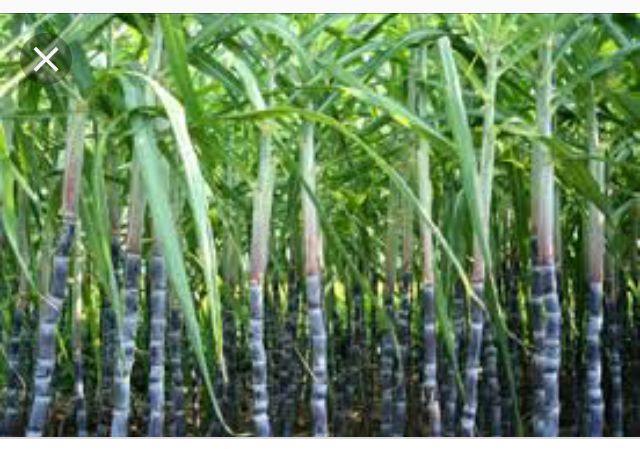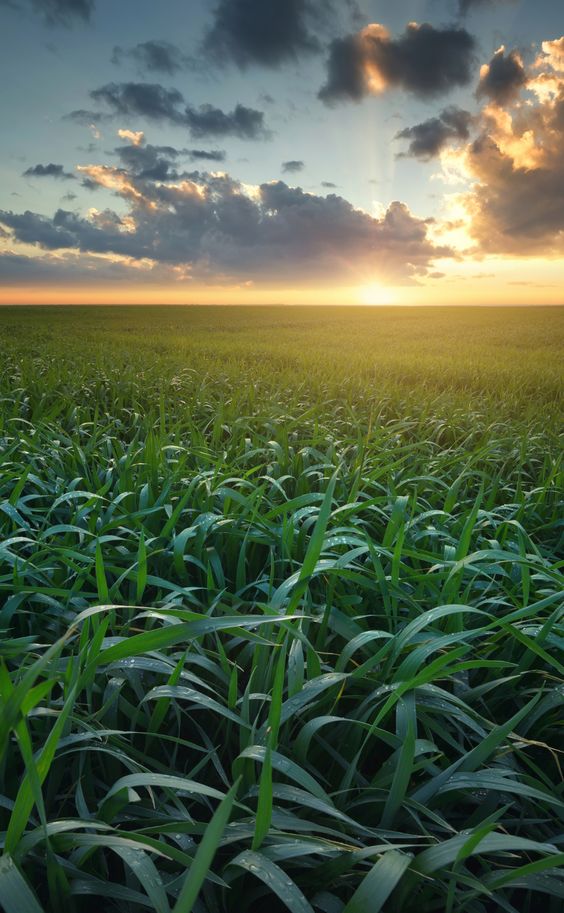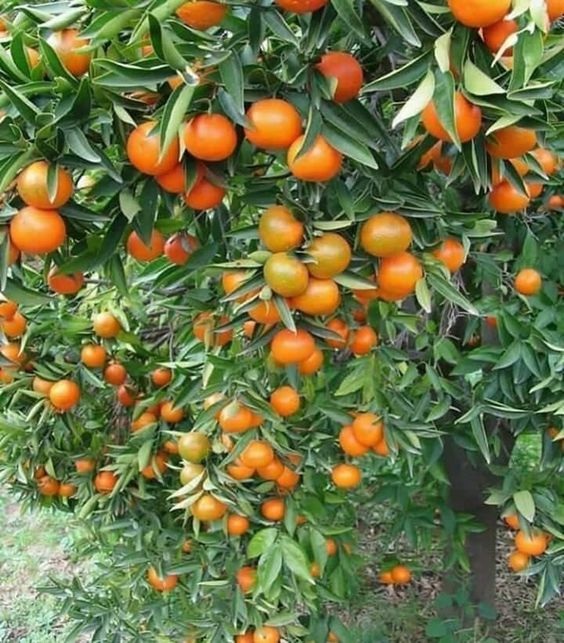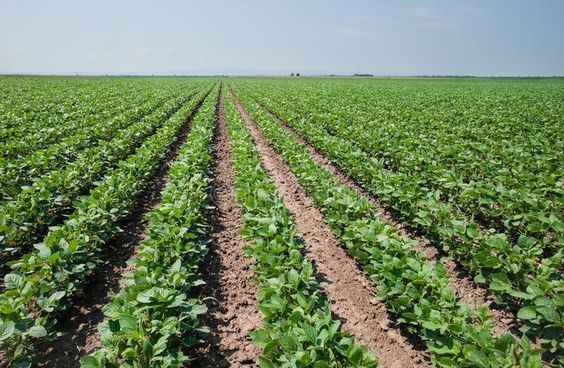The Future of the Sugarcane Market: Integrating Smart Agriculture for Sustainable Growth
Sugarcane Market,The global sugarcane market plays a pivotal role in the agricultural sector, serving as a primary source of sugar, ethanol, and other byproducts. With the rising demand for sustainable and efficient farming practices, Smart Agriculture has emerged as a transformative approach to optimizing sugarcane production. By leveraging advanced technologies such as precision farming, IoT devices, and data analytics, Smart Agriculture offers the potential to enhance crop yield, reduce resource consumption, and improve overall market competitiveness. This article delves into the integration of Smart Agriculture within the sugarcane market, exploring its benefits, objectives, practical applications, and future potential.
Contents
- 1 Benefits of Smart Agriculture in the Sugarcane Market
- 2 Objectives of Implementing Smart Agriculture in the Sugarcane Market
- 3 Practical Applications of Smart Agriculture in Sugarcane Farming
- 4 Usefulness of Smart Agriculture in the Sugarcane Market
- 5 Advantages of Smart Agriculture in the Sugarcane Market
- 6 Challenges and Solutions in Implementing Smart Agriculture
Benefits of Smart Agriculture in the Sugarcane Market
1. Enhanced Crop Monitoring and Yield Optimization
Smart Agriculture technologies offer a transformative approach to monitoring and managing sugarcane crops. By utilizing advanced tools such as remote sensing, drones, and satellite imagery, farmers gain access to real-time data on crop health, growth patterns, and environmental conditions. Remote sensing and drones capture high-resolution images and data that highlight variations in crop conditions across large fields. This allows farmers to identify specific areas needing attention, whether due to nutrient deficiencies, pest infestations, or water stress.
The ability to detect issues early is critical for timely intervention. For example, if a drone identifies areas with yellowing leaves—a sign of potential nutrient deficiency—farmers can adjust fertilizer applications precisely to those affected areas rather than applying uniformly across the entire field. This targeted approach not only optimizes the use of inputs but also improves overall crop health and yield. By continuously monitoring crops, Smart Agriculture helps in adjusting practices in real-time, leading to higher productivity and better-quality sugarcane.
2. Precision Resource Management
Sugarcane Market,One of the hallmark benefits of Smart Agriculture is its ability to manage resources with unprecedented precision. Traditional farming often involves broad application of water, fertilizers, and pesticides, which can lead to inefficiencies and environmental harm. Precision irrigation systems, equipped with soil moisture sensors, revolutionize water management by applying water exactly where and when it is needed. These sensors monitor soil moisture levels and ensure that irrigation is tailored to the specific requirements of different parts of the field, reducing water wastage and enhancing water use efficiency.
Similarly, variable rate technology (VRT) enables the precise application of fertilizers and pesticides. By analyzing data on soil nutrient levels and crop requirements, VRT systems adjust the quantity and distribution of inputs, minimizing over-application and reducing environmental impact. This precision in resource management not only conserves resources but also lowers operational costs, making sugarcane farming more economical and environmentally friendly.
3. Sustainable Farming Practices
Sugarcane Market,Sustainability is a core advantage of Smart Agriculture, significantly reducing the environmental footprint of sugarcane farming. By optimizing resource use and minimizing waste, Smart Agriculture practices contribute to the conservation of natural resources and the protection of ecosystems. The precision application of inputs helps reduce the overuse of chemicals, which can lead to soil degradation and water pollution. This responsible approach supports healthier ecosystems and promotes long-term agricultural sustainability.
Furthermore, the adoption of renewable energy sources, such as solar-powered irrigation systems, enhances the sustainability of sugarcane farming. Solar-powered systems reduce reliance on fossil fuels, lowering the carbon footprint of farming operations. This shift towards renewable energy aligns with global efforts to combat climate change and supports more environmentally friendly farming practices.
4. Improved Decision-Making through Data Analytics
Sugarcane Market,Data analytics is a game-changer in Smart Agriculture, providing farmers with actionable insights derived from large volumes of data. Predictive analytics and machine learning algorithms analyze historical and real-time data to forecast crop yield, market trends, and potential risks. This data-driven approach enables farmers to make informed decisions, such as adjusting planting schedules, optimizing input use, and managing market strategies.
For example, predictive models can forecast weather patterns, allowing farmers to plan irrigation and harvesting schedules more effectively. By anticipating potential risks, such as pest outbreaks or adverse weather events, farmers can implement preventative measures to safeguard their crops. The enhanced accuracy and foresight provided by data analytics lead to better farm management practices, improved outcomes, and increased profitability.
5. Labor Efficiency and Cost Reduction
Sugarcane Market,Automation and mechanization are central to the benefits of Smart Agriculture, particularly in addressing labor challenges and reducing costs. Autonomous machinery, such as self-driving tractors and harvesters, performs tasks with high precision and efficiency. These technologies reduce the need for manual labor, which is increasingly scarce and expensive. Automated systems can carry out repetitive and time-consuming tasks, such as planting, weeding, and harvesting, more efficiently than human laborers.
The use of autonomous machinery also translates to cost savings. By reducing labor requirements and increasing operational efficiency, farmers can lower production costs while enhancing productivity. Additionally, automation helps mitigate labor shortages, a significant challenge in the sugarcane industry, ensuring that farming operations remain viable and competitive.
 “
“
Objectives of Implementing Smart Agriculture in the Sugarcane Market
1. Increase Crop Productivity and Yield
Sugarcane Market,The foremost objective of implementing Smart Agriculture in the sugarcane market is to significantly boost crop productivity and yield. Traditional farming methods often struggle with optimizing growth conditions due to limited data and manual practices. Smart Agriculture addresses these challenges by integrating advanced technologies such as remote sensing, drones, and precision irrigation systems. These tools provide real-time insights into crop health, soil conditions, and environmental factors.
For instance, remote sensing technologies can monitor crop growth and detect early signs of issues like nutrient deficiencies or water stress. This allows for timely and targeted interventions, such as adjusting irrigation schedules or applying fertilizers precisely where needed. Additionally, precision farming techniques enable the optimization of growth conditions by ensuring that each part of the field receives the right amount of water, nutrients, and care. This targeted approach leads to higher crop yields and reduced waste, as farmers can maximize the potential of every hectare of their land.
2. Enhance Profitability and Market Competitiveness
Sugarcane Market,Enhancing profitability is a critical objective of adopting Smart Agriculture technologies. By improving resource efficiency and reducing input costs, farmers can achieve better financial outcomes. Precision farming techniques, such as variable rate technology (VRT) and precision irrigation, allow for more efficient use of resources, including water, fertilizers, and pesticides. This not only lowers operational costs but also minimizes environmental impact.
Sugarcane Market Smart Agriculture also contributes to market competitiveness by increasing the overall yield and quality of sugarcane. Higher productivity enables farmers to meet market demand more effectively and capitalize on favorable market conditions. With improved crop quality and consistent supply, farmers can position themselves competitively in the global market. This competitive edge is crucial for maximizing returns on investment and ensuring long-term financial viability in the sugarcane industry.
3. Promote Sustainable and Environmentally-Friendly Farming
Sugarcane Market,Sustainability is a key objective of Smart Agriculture, with a strong emphasis on minimizing the environmental footprint of farming practices. Traditional sugarcane farming often relies on heavy use of chemicals and water, which can lead to soil degradation, water pollution, and loss of biodiversity. Smart Agriculture promotes sustainability by adopting precision farming techniques that reduce the overuse of inputs.
By utilizing technologies such as soil moisture sensors and nutrient management systems, farmers can apply water and fertilizers more precisely, reducing waste and environmental impact. Additionally, Smart Agriculture supports the use of renewable energy sources, such as solar-powered irrigation systems, further enhancing the sustainability of farming practices. These approaches contribute to the conservation of natural resources and the protection of ecosystems, aligning with global efforts to promote eco-friendly agriculture.
4. Improve Risk Management and Resilience
Sugarcane Market,Effective risk management is another critical objective of Smart Agriculture. The sugarcane industry faces various risks, including climate change, pest infestations, and market fluctuations. Smart Agriculture technologies provide farmers with tools to better manage these risks through data analytics and predictive modeling.
Data analytics enables farmers to analyze historical and real-time data to forecast potential risks and challenges. For example, predictive models can forecast weather patterns, allowing farmers to adjust irrigation and planting schedules accordingly. Additionally, early detection systems can identify pest infestations or disease outbreaks, enabling timely interventions to prevent crop losses. By leveraging these technologies, farmers can develop strategies to mitigate risks and build resilience against potential challenges.
Smart Agriculture also supports financial risk management by providing insights into market trends and price fluctuations. This information allows farmers to make informed decisions about production and sales strategies, reducing the impact of market volatility on their operations.
Practical Applications of Smart Agriculture in Sugarcane Farming
1. Precision Irrigation Systems
Sugarcane Market,Precision irrigation systems are at the forefront of Smart Agriculture applications in sugarcane farming. Traditional irrigation methods often result in water wastage and uneven distribution, which can negatively affect crop health and yield. Precision irrigation systems, however, utilize advanced sensors to monitor soil moisture levels continuously. These sensors are strategically placed throughout the fields to collect real-time data on soil hydration.
This data is then used to control irrigation schedules and water distribution, ensuring that each section of the field receives the precise amount of water needed. By delivering water only where it is required, precision irrigation significantly reduces water wastage, which is crucial in regions facing water scarcity. Additionally, this targeted approach helps to prevent issues like waterlogging or drought stress, both of which can negatively impact sugarcane growth. The result is a more efficient use of water resources and healthier, more productive crops.
Moreover, the system can be automated and connected to weather forecasting tools, allowing for adjustments based on predicted rainfall, temperature, and humidity levels. This integration ensures that water usage is optimized according to environmental conditions, further enhancing the sustainability and efficiency of sugarcane farming.
2. Remote Sensing and Drone Technology
Sugarcane Market,Remote sensing and drone technology have revolutionized how farmers monitor and manage sugarcane crops. Remote sensing involves the use of satellite imagery and drones to gather data on crop health, soil conditions, and environmental factors. Drones, in particular, are equipped with multispectral and thermal cameras that can capture high-resolution images of large sugarcane fields.
These images provide detailed insights into the condition of the crops, highlighting areas that may be experiencing stress due to pests, diseases, or nutrient deficiencies. For instance, variations in color captured by multispectral cameras can indicate areas where sugarcane plants are underperforming. Farmers can then take targeted actions, such as adjusting fertilizer applications or treating specific areas for pest infestations, rather than applying a uniform solution across the entire field.
The data collected by drones and satellites can also be used to create detailed maps of the fields, which can guide precision agriculture practices, such as variable rate application of inputs. This data-driven approach ensures that resources are used efficiently and that interventions are timely and effective, ultimately leading to improved crop yields and reduced input costs.
3. IoT-Based Soil and Crop Monitoring
Sugarcane Market,The Internet of Things (IoT) has become an integral part of Smart Agriculture, particularly in soil and crop monitoring. IoT devices, including soil sensors, weather stations, and smart irrigation controllers, are deployed across sugarcane fields to collect data on various parameters such as soil moisture, pH, temperature, humidity, and nutrient levels. These devices communicate wirelessly, transmitting data to a central platform where it can be accessed in real-time by farmers through mobile apps or dashboards.
This real-time data allows farmers to monitor the health of their crops and the condition of the soil continuously. For example, if soil sensors detect a drop in moisture levels, an alert can be sent to the farmer’s smartphone, prompting immediate action to irrigate the affected area. Similarly, data on soil nutrient levels can guide the application of fertilizers, ensuring that crops receive the necessary nutrients at the right time.
The integration of IoT in sugarcane farming not only enhances the precision of farming practices but also reduces the time and labor required to monitor fields manually. This leads to more efficient and effective farm management, optimizing crop health and productivity.
4. Automated Machinery and Robotics
Sugarcane Market,Automation and robotics are transforming labor-intensive tasks in sugarcane farming, making them more efficient and less reliant on manual labor. Automated machinery, such as GPS-guided tractors and robotic harvesters, can perform essential tasks with high precision and consistency. For instance, autonomous tractors equipped with GPS and AI can plant sugarcane with exact spacing and depth, ensuring optimal growing conditions.
Robotic harvesters can also operate continuously, harvesting sugarcane with precision, reducing crop damage, and increasing harvesting speed. The use of automated machinery reduces the dependency on seasonal labor, which can be both costly and difficult to manage, especially in regions facing labor shortages. Moreover, these machines can operate in various conditions, including challenging weather, ensuring that farm operations are not delayed.
Automation not only lowers labor costs but also increases the overall efficiency of farming operations. By streamlining tasks such as planting, weeding, and harvesting, farmers can focus on strategic decision-making and farm management, ultimately improving the profitability and sustainability of their operations.
5. Data Analytics and Predictive Modeling
Sugarcane Market,Data analytics and predictive modeling are powerful tools in Smart Agriculture, enabling farmers to make informed decisions based on vast amounts of data collected from various sources. These tools analyze data related to weather patterns, soil conditions, crop health, and market trends, providing farmers with actionable insights.
Predictive modeling, for example, can forecast potential risks such as pest outbreaks, disease spread, or unfavorable weather conditions. By anticipating these challenges, farmers can implement preventive measures, such as applying protective treatments or adjusting planting schedules, to mitigate risks and avoid crop losses.
Additionally, data analytics can optimize resource allocation, helping farmers to determine the most cost-effective use of inputs like water, fertilizers, and pesticides. This not only enhances crop yield and quality but also reduces unnecessary expenditures, leading to higher profitability.
Usefulness of Smart Agriculture in the Sugarcane Market
1. Enhanced Crop Quality and Consistency
Sugarcane Market Smart Agriculture technologies contribute to the production of high-quality and consistent sugarcane crops. By optimizing growth conditions and reducing the impact of external factors, farmers can produce sugarcane that meets market standards and demands. This consistency in quality is crucial for maintaining a competitive edge in the global market.
2. Resource Conservation and Environmental Protection
Sugarcane Market,The adoption of Smart Agriculture in sugarcane farming leads to significant resource conservation, particularly in terms of water and energy use. Precision irrigation systems, for example, reduce water consumption by applying water only where it is needed. Similarly, the use of renewable energy sources, such as solar-powered pumps, reduces the carbon footprint of farming operations.
3. Economic Viability and Market Growth
Sugarcane Market Smart Agriculture enhances the economic viability of sugarcane farming by increasing yield, reducing costs, and improving market access. The ability to produce more with fewer resources translates to higher profitability for farmers. Additionally, the adoption of sustainable practices positions sugarcane products as environmentally friendly, appealing to consumers and markets that prioritize sustainability.
4. Adaptation to Climate Change
Sugarcane Market,Climate change poses a significant threat to global agriculture, including the sugarcane market. Smart Agriculture provides farmers with tools to adapt to changing climatic conditions. For instance, data analytics can help predict weather patterns, enabling farmers to adjust planting and harvesting schedules. Precision farming techniques also mitigate the effects of drought or excessive rainfall, ensuring stable crop production.
Advantages of Smart Agriculture in the Sugarcane Market
1. Scalability and Flexibility
Sugarcane Market,One of the most significant advantages of Smart Agriculture in the sugarcane market is its scalability and flexibility. These technologies can be tailored to meet the specific needs of farms of various sizes, ranging from smallholder farms to extensive commercial plantations. This adaptability is crucial in ensuring that Smart Agriculture can be adopted by a diverse group of farmers, regardless of the scale of their operations.
For smallholder farmers, the scalability of Smart Agriculture means that they can start with basic technologies, such as soil sensors or mobile apps for crop monitoring, and gradually expand to more advanced systems like precision irrigation or drone-based crop management as their resources and knowledge grow. This step-by-step approach makes it easier for smaller farms to integrate these technologies without overwhelming their existing operations.
On the other hand, large commercial plantations can implement comprehensive Smart Agriculture solutions that cover all aspects of farm management, from automated machinery and advanced analytics to IoT-based monitoring systems. These large-scale implementations allow for the optimization of every stage of the farming process, leading to significant improvements in efficiency, yield, and profitability.
Moreover, the flexibility of Smart Agriculture technologies ensures that they can be adapted to different regional conditions and farming practices. For instance, in regions with limited water resources, precision irrigation systems can be customized to maximize water use efficiency. In contrast, areas prone to specific pests or diseases can benefit from targeted drone surveillance and pest management solutions. This adaptability makes Smart Agriculture a valuable tool for addressing the unique challenges faced by sugarcane farmers across different environments.
2. Improved Market Access and Competitiveness
Sugarcane Market Smart Agriculture can significantly enhance farmers’ access to markets by improving the quality, consistency, and sustainability of their sugarcane production. High-quality sugarcane that meets stringent market standards is more likely to attract premium buyers, such as those in the organic or fair-trade sectors, where there is a growing demand for sustainably produced agricultural products.
Sugarcane Market.By using Smart Agriculture technologies, farmers can ensure that their sugarcane is grown under optimal conditions, leading to uniformity in crop quality and yield. This consistency is crucial for meeting the demands of buyers who require reliable and consistent supplies of high-quality raw materials. For instance, precision farming techniques can ensure that sugarcane plants receive the exact amount of nutrients and water they need, resulting in a uniform crop that meets market standards.
Additionally, Smart Agriculture facilitates traceability, which is increasingly important in modern markets. With technologies such as blockchain and IoT, farmers can provide detailed records of their farming practices, including the use of inputs, harvesting methods, and environmental impact. This transparency is highly valued by buyers, particularly in international markets, where consumers are more conscious of the environmental and social implications of their purchases.
Sugarcane Market,The competitive advantage gained through the adoption of Smart Agriculture can also help farmers secure long-term contracts with buyers. Companies looking to source sustainable and high-quality sugarcane are more likely to partner with farmers who use advanced agricultural technologies, as these practices align with their corporate social responsibility goals. This stability in market access can provide farmers with a more predictable income stream, reducing the risks associated with market volatility.
3. Long-Term Sustainability and Resilience
Sugarcane Market,Smart Agriculture plays a crucial role in promoting long-term sustainability and resilience in the sugarcane market. By reducing the environmental impact of farming practices, these technologies help conserve essential resources such as water, soil, and energy, ensuring that sugarcane farming remains viable for future generations.
For example, precision irrigation systems not only conserve water but also prevent soil degradation caused by over-irrigation. Similarly, the use of renewable energy sources, such as solar-powered irrigation pumps, reduces the carbon footprint of sugarcane farming, contributing to the fight against climate change. These sustainable practices not only protect the environment but also improve the long-term productivity of the land, making it possible to grow sugarcane more sustainably over time.
Sugarcane Market,In addition to promoting sustainability, Smart Agriculture enhances the resilience of the sugarcane market by equipping farmers with the tools they need to withstand various challenges. Climate change, for instance, poses a significant threat to sugarcane farming due to its impact on weather patterns, water availability, and pest populations. However, with the help of predictive analytics and IoT-based monitoring systems, farmers can anticipate and mitigate the effects of these changes, reducing the risk of crop failures and financial losses.
Moreover, the efficiency gains achieved through Smart Agriculture make sugarcane farming more resilient to market fluctuations and resource constraints. By optimizing resource use and reducing input costs, farmers can maintain profitability even when faced with economic challenges, such as rising input prices or falling sugar prices.

Challenges and Solutions in Implementing Smart Agriculture
1. High Initial Investment Costs
Sugarcane Market,One of the primary challenges in adopting Smart Agriculture technologies is the high initial investment required for equipment and infrastructure. Farmers may need to invest in advanced machinery, sensors, and data management systems, which can be prohibitively expensive, especially for smallholder farmers.
Governments and private sector organizations can support the adoption of Smart Agriculture through subsidies, grants, and financing options. Additionally, partnerships between technology providers and agricultural cooperatives can help reduce costs and provide access to advanced technologies.
2. Technical Expertise and Training
Sugarcane Market.The successful implementation of Smart Agriculture requires a certain level of technical expertise and training. Farmers may need to learn how to operate new technologies, analyze data, and integrate systems into their existing farming practices.
Providing training programs and technical support is essential for the effective adoption of Smart Agriculture. Educational institutions, agricultural extension services, and technology providers can offer training and resources to help farmers build the necessary skills and knowledge.
3. Data Security and Privacy
Sugarcane Market,The use of data in Smart Agriculture raises concerns about data security and privacy. Farmers’ data, including crop performance and resource usage, may be vulnerable to unauthorized access or misuse.
Implementing robust data security measures, such as encryption and secure access controls, can protect sensitive information. Additionally, establishing clear data privacy policies and ensuring transparency in data handling practices can help address these concerns.
4. Infrastructure and Connectivity
Sugarcane Market,Effective Smart Agriculture relies on reliable infrastructure and connectivity, including internet access and data transmission networks. In rural areas, limited infrastructure can hinder the implementation of advanced technologies.
Investing in rural infrastructure development, such as expanding internet access and improving connectivity, is crucial for the successful deployment of Smart Agriculture. Public-private partnerships can play a key role in enhancing infrastructure and bridging connectivity gaps.




